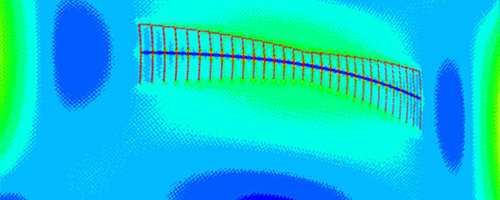Surgical treatments include quiet often the opening of the abdominal wall (Laparotomy). In Germany, around 100,000 clinical cases per year require this treatment. One particular complication, who develops at a rate of 10%-20%, is the development of Hernia. The corresponding risk factors are not fully understood yet, but is accepted by surgeons that the mechanics of the abdominal wall around the wound is crucial.
Optimization parameters
The goal of the efforts at the ITWM in this field is the development of an optimization method, which is based on a mechanical model of the abdominal wall including the wound. The optimization parameters are the ones controlled by the surgeon: suture material, stitch pattern and the inclusion of so called Hernia-Nets. Using this optimization model, we will advice surgical techniques in order to reduce the clinical Hernia rates.
As a starting point, we used a rudimentary finite element model of the abdominal wall, including a wound, and set up an optimization algorithm for the suture stitch pattern. The goal was to find the best stitch pattern which reduces the mechanical stresses along the wound under various physiological loads.
The results of this study form the hypotheses of an ongoing clinical trial at the Univ. Klinikum Homburg, Germany. Our next steps will the inclusion of Hernia-Nets in our optimization procedure and a refinement of the abdominal wall model. This will be a joint effort with the industry.

